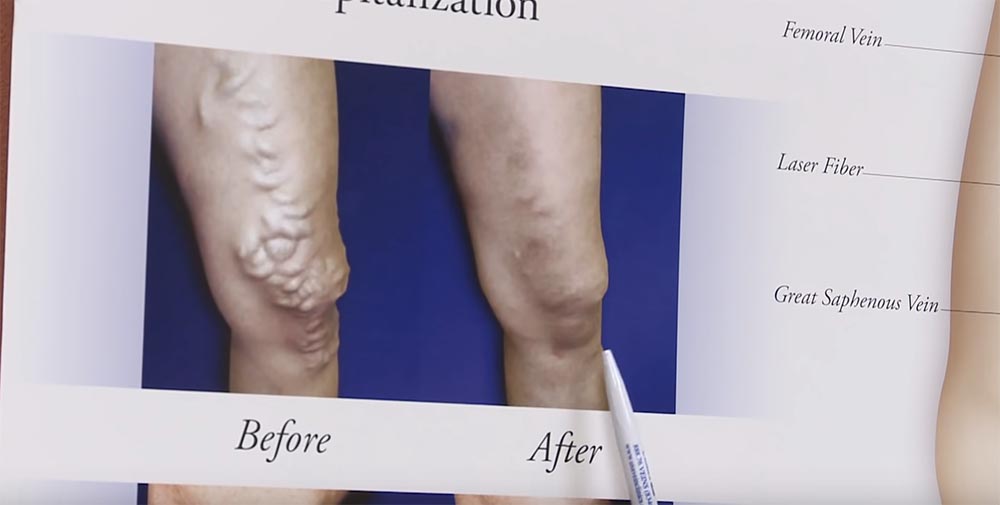How are varicose veins addressed? One of the leading methods today is radiofrequency ablation (RFA), known for its exceptional and non-surgical effectiveness. This varicose vein treatment technique is gaining prominence in the medical community.
Using RFA for Varicose Vein Treatment
Radiofrequency ablation is becoming the preferred treatment for the incompetence of the Internal and External Saphenous veins – the primary sources of most noticeable varicose veins. Correctly treating these veins with radiofrequency ablation can target the root causes of varicose veins, making subsequent treatments more effective
Understanding the RFA Procedure
Radiofrequency ablation involves controlled thermal energy targeting the problematic varicose vein, causing collagen denaturation and contraction, ultimately leading to the closure of the vein. This encourages blood flow through healthier veins. Though similar to laser treatments, RFA and lasers function distinctly. Lasers coagulate blood and alter the vein’s internal layer, whereas RFA, with its consistently controlled lower temperatures, alters venous wall proteins, leading to efficient fibrotic occlusion.
Technically, a thin bipolar catheter is introduced through a minor skin puncture with local anesthesia. Using ultrasound guidance, the catheter’s therapeutic end is placed at the saphenous-femoral junction and then gradually retracted, closing the vein. Post the radiofrequency ablation procedure, patients are advised to walk regularly after having a compression bandage applied.
Benefits of Radiofrequency Ablation
Radiofrequency ablation boasts several distinct advantages, solidified by research and scientific evidence:
- Outpatient treatment under local anesthesia, allowing patients to resume normal activities on the day of the procedure.
- Eliminates the need for a surgical approach to the groin.
- Fewer incisions, resulting in less bruising and ecchymosis.
- Minimal postoperative pain, ensuring a better quality of life for patients.
When to Seek Medical Advice
Consult a doctor if:
– Veins feel warm and unusually soft.
– Veins are causing pain.
– Symptoms like ulcers, rashes, or skin sores appear.
– Skin around the calf or ankle discolors and thickens.
– Spider or varicose veins bleed.
**Indications for Radiofrequency Ablation**
Consider RFA if:
– Large, visibly protruding veins are present.
– Experiencing leg pain or heaviness.
– Leg cramps or tingling sensations persist.
– Skin shows ulcerations or sores due to excessive vein pressure.
– Walking becomes difficult.
Varicose Vein Treatment at USA Veins Clinic
*Before the procedure*: A comprehensive preoperative assessment is conducted. Patients are informed about medication protocols and other necessary preparations. Avoid wearing metal accessories during the procedure.
After the procedure: This outpatient procedure emphasizes immediate movement. Post-radiofrequency ablation, a compression stocking is recommended, and most patients can return to work within 12 to 24 hours.
At USA Veins Clinic, our expertise in using these cutting-edge treatments is unmatched. With numerous successful varicose vein treatments under our belt, patient satisfaction remains high, making RFA a primary tool in our fight against varicose veins.
Book your online consultation for vein treatment today!
Website: https://www.usaveinclinics.com/
Clare Weyers
Recent Posts
- Castor Oil For Better Hair Growth: Is It Myth Or Fact?
- Exploring the Differences Between Sermorelin, Ipamorelin, Ibutamoren, GHRP2, and GHRP6: Understanding Their Role in Human Growth Hormone Regulation
- Unraveling the Mystery: Understanding the Causes and Prognosis of Ventricular Tachycardia Without Apparent Heart Disease
- Understanding Grandparents’ Rights in Oklahoma: Navigating Visitation and Legal Protections
- 10 Reasons to Consider Hypnotherapy for Your Health

